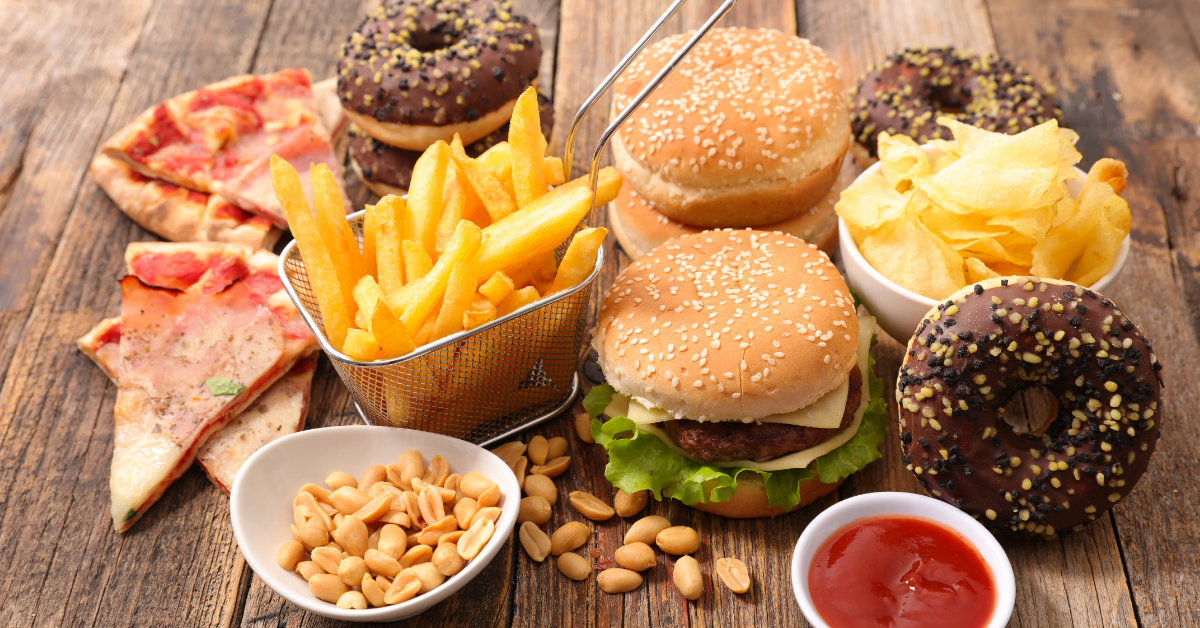Losing weight or maintaining a healthy weight sounds simple, right? All you need to do is make a commitment to eat less and exercise more. Today’s environment, however, can creep in as a barrier to success. Eating well is now quite challenging because of societal changes in the way we eat and live — especially if your goal is to manage your weight.
What are these changes that discourage us from staying healthy? The increase in the size of what is considered standard portions of food and the rapid development of technology encourage us to stay glued to our computers and televisions instead of being physically active.
Beyond Fast Food
When you think of today’s growing portions, fast food probably comes to mind: Supersizing. Extra Value Meals. Great Biggie fries. Double Gulps. If these offerings were solely responsible for the growth of portion sizes, we might be able to bite the bullet, so to speak, and avoid them.
The problem is that portions are growing across the board, in grocery stores and cookbooks, and on the family dinner table. Did you know that identical recipes for cookies and desserts in new editions of classic cookbooks such as “Joy of Cooking” now yield fewer servings? This means that individual portions are expected to be larger.
Here’s a challenge: Try to find a fresh bagel the same size as a Lender’s frozen bagel (2.3 ounces). It’s next to impossible! A honey 9-grain bagel from Au Bon Pain is 5 ounces and 360 calories, the same number of calories as in a large chocolate bar. And that’s without anything on it!
At times, you’re not even aware of the forces conspiring against you. But few more calories here and there plus the hours spent surfing the Internet translate to those extra 10 pounds that just won’t come off.
Whose Fault Is It?
When we focus on why an individual is obese, a combination of genetic and environmental reasons comes to mind. However, if we ask why an entire nation is suddenly obese, we cannot ignore the environment as being the primary cause.
New research about the genetic basis of being overweight or obese is exciting. Novel treatments are surely on the horizon. Nevertheless, we must remember that genetic susceptibility, no matter how strong, will rarely create obesity without the temptations of a challenging food environment.
Awareness Equals Success
How much did you have to eat today? How much did you move your body? It sounds tedious, but honestly keeping track of your daily food intake and activity output is the only way to stay on top of your healthy weight goals. No longer can you fly blind, indulging without a thought in today’s hefty food offerings and entertaining technology. It is really up to you to be accountable.
Setting up an accounting system that works for you is essential. Seeing a written record of what you ate and how much you exercised will help you to find a balance specific to your needs and goals. Be sure to keep track throughout the day. If you save this for the end of the day, you risk missing some of the small details, and it’s usually the small details that count the most!
Changing The Environment
How easy it would be to eat smaller portions if they were simply smaller, to begin with! So, why can’t we just change the environment? It’s not so easy, although some people are trying. Fast-food lawsuits are trying to mimic tobacco lawsuits. Some obesity experts are recommending taxing certain junk foods. Despite well-intentioned political efforts, changing the polluted food environment will not be easy or quick.
Meanwhile, consider the following Mom’s advice to get off the sofa and go outside to get exercise. But think twice before following her advice to clean your plate.
Anxiety and compulsive obesity
It is known that compulsive obesity is a big disease in the US, and it commonly comes with anxiety, as the portions are getting bigger in our country when anxiety hits and we want to eat, bigger and bigger portions of food and lots of calories are ingested, so our whole country starts to get obese easier. If you are feeling anxious and eager to eat, but don’t know how to control it, alternative medicine can be a good solution to help calm your anxiety, acupuncture is well known for helping with a lot of diseases including anxiety and compulsive obesity, visite AB acupuncture to get to know more about, and don’t frustrate yourself with anxiety, when the eating eager comes, try to choose healthier and less caloric options, it will help to get to your healthy weight.


 Keep from overeating this holiday season with a healthy eating plan that is easy to follow. Enjoy the holiday meal without skipping the good stuff!
Keep from overeating this holiday season with a healthy eating plan that is easy to follow. Enjoy the holiday meal without skipping the good stuff!
 Found in the plant’s roots, kava’s main calming ingredients are known as kavalactones. These fat-like substances relax the body and induce sleep, acting somewhat like the tranquilizers Valium or Xanax, although researchers aren’t exactly sure how the herb works. In Germany, kava remains one of the most popular doctor-recommended remedies for frayed nerves. The German Commission E, an FDA-like panel of experts that evaluates the safety and effectiveness of botanicals, has given the herb its stamp of approval.
Found in the plant’s roots, kava’s main calming ingredients are known as kavalactones. These fat-like substances relax the body and induce sleep, acting somewhat like the tranquilizers Valium or Xanax, although researchers aren’t exactly sure how the herb works. In Germany, kava remains one of the most popular doctor-recommended remedies for frayed nerves. The German Commission E, an FDA-like panel of experts that evaluates the safety and effectiveness of botanicals, has given the herb its stamp of approval.